For grades 9 through 12, home educating parents must fill out a transcript form that records subjects studied, years of study, units of credit, and final grades. Transcripts ought to be kept on permanent file. Although some colleges are happy to accept portfolios for homeschool applications, most insist on a regular transcript—and almost all financial aid departments require a transcript form before they will disburse aid. So fill that piece of paper out—it’s important!
The Well-Trained Mind: A Guide to Classical Education at Home offers detailed and specific guidance in how to settle on grades and award credits in many areas across the curriculum. However, here’s a brief guide to transcript preparation.
First, realize that the transcript isn’t an “official” form like a birth certificate or passport. It’s simply an organized document that records each subject studied, the traditional end-of-semester grades—A, B, C, and so forth—and achievement test scores. Transcript forms can be acquired from (or downloaded from) several different suppliers; see High School Transcript Forms for up-to-date suggestions. (And have a look at a perfectly acceptable, hand-written Sample High School Transcript here.)
The student needs to fulfill a minimum number of credits in order to graduate from high school. Traditionally, 1 credit in high school equals 120 hours of classwork, or 160 45-minute periods. Labs and projects, field trips, and independent reading can all count as classwork.
See State & Local Organizations and State Laws for links to your local requirements. (If your state is not represented, search with a web browser using a search string like this: home school homeschool (your state) laws (or organizations. By placing the subject, grade level and year, credit awarded, and grade on the transcript form, you are certifying that the work has been completed.
Generally speaking, secondary school subjects are organized into nine areas. The core areas (every student must take them in order to graduate) are Language Arts, Maths, Social Sciences, Natural Sciences, Foreign Languages, and Physical Education. The elective areas (they can count as credits, but aren’t required) are Fine Arts, Practical Arts, and Business.
Most individual subjects fall into one of these core areas (and those that don’t can be classified as “Other” and considered electives). The following chart shows the most common groupings of subjects, although there is some flexibility in how subjects can be classified:
Core
Language Arts
- Reading
- Phonics
- Literature
- Writing
- Handwriting
- Composition
- Rhetoric
- Grammar
- Spelling
- Vocabulary
Maths
- Arithmetic
- Operations (Addition, Subtraction, Multiplication, Division)
- Geometry
- Mathematics
- Algebra
- Pre-calculus and Calculus
- Trigonometry
Social Sciences
- History
- Government
- “Social Studies”
Natural Sciences
- Biology
- Chemistry
- Physics
- Geology
- Environmental Science
- Labs (hands-on)
Foreign Language
- Study of any language other than English (Check to see if the college accepts ancient languages or sign language.)
Physical Education
- Instruction in sports
- General fitness
Elective
Fine Arts
- Music
- Art
- Drama
Practical Arts
- Shop
- Driver’s ed
Business
- Accounting
Other
- Computer programming
- Logic/thinking skills
- Health
- Rhetoric
- Test preparation
Any courses taken through a community college or a concurrent program at a local university should be listed on the high-school transcript along with the grade earned. These courses also count toward high-school graduation credits.
The high-school transcript also includes space for extracurricular activities. Record all the student’s nonacademic activities (teams, hobbies that she puts significant time into, athletic pursuits, music lessons, competitions, volunteer work, jobs, all memberships in any kind of organization, any leadership positions at church or in community groups, all participation in regular community activities). You’ll probably have to list these on a separate sheet of paper or fit them into a margin on the transcript since most transcripts have a preset list of extracurricular activities (“Offices Held” or “Band”). Just make sure these activities appear with the transcript wherever it is submitted.
High school graduation requirements and college admissions expectations are slightly different. The requirements listed below are those that a college admissions officer would generally look for on a reasonably competitive high school transcript.
Subject Required Credits Area
Language Arts 4 Language Arts
Mathematics 3-4 Mathematics
Foreign Language 2-4 Foreign Language
World History 1 Social Science
American History 1 Social Science
American Government 1 Social Science
Science 3-4 Natural Science
Physical Education 2 Physical Education
Electives 4-8 Any area
Time spent reading, writing, and doing spelling and vocabulary can all count towards the Language Arts credit.
Algebra 1, Geometry, Algebra II, and upper level mathematics can count towards the Mathematics credits. Pre-algebra cannot be counted for high school credit, even if taken in ninth grade.
Foreign Language credits can be any modern or ancient language. (Some colleges do not allow ancient languages to count as foreign language credits; check the requirements of candidate colleges.)
World History can be Ancient, Medieval, Renaissance, or Modern.
Science can be Biology, Chemistry, Physics, Geology, Astronomy, or any topics that are subsets of those. Generally speaking, Earth Science is not considered high school level, even when taken in ninth grade or later. In most cases, at least two years of science study should include a lab component.
Physical Education credits can be awarded for 120 hours of purposeful physical activity, as long as the student logs those hours in a journal or diary.
Electives are made up of additional high school credits beyond those listed in the core areas. For example, if a high school student takes both a composition course and American Literature, she would earn two Language Arts credits on the high school transcript. One credit would fulfill the Language Arts requirement for that year; the other would go towards the Elective credit.
Recommended Products
-

Juneteenth Booklist & Activities
0 out of 5$0.00 Add to cart -
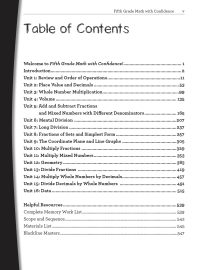
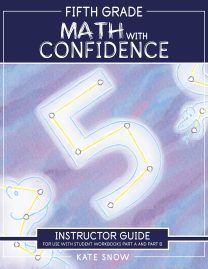
Fifth Grade Math with Confidence Instructor Guide
0 out of 5Starting at:$36.95Original price was: $36.95.$27.71Current price is: $27.71. Select options -
Sale!

Hansel & Gretel and Other Stories: Downloadable MP3
0 out of 5$12.95Original price was: $12.95.$8.42Current price is: $8.42. Add to cart -
Sale!

Dorothy and the Wizard in Oz: Downloadable MP3
0 out of 5$25.95Original price was: $25.95.$16.87Current price is: $16.87. Add to cart -
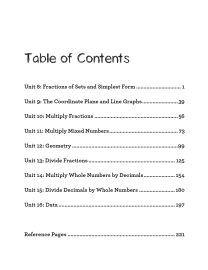 Sale!
Sale!
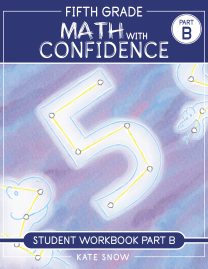
Fifth Grade Math with Confidence Student Workbook B
0 out of 5$16.46 – $21.56 Select options This product has multiple variants. The options may be chosen on the product page -
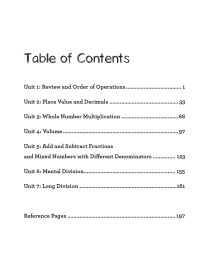 Sale!
Sale!
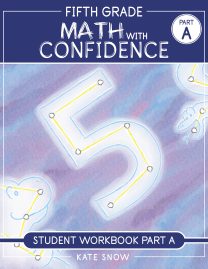
Fifth Grade Math with Confidence Student Workbook A
0 out of 5$16.46 – $21.56 Select options This product has multiple variants. The options may be chosen on the product page
ABOUT THE AUTHOR
Susan Wise Bauer
Join over 100,000 homeschooling families
For the latest offers, educational insights, products and more.
By joining you agree to our privacy policy.















29 thoughts on “How to Assign High School Credits”
Thank you, Susan! Your site is always so helpful.
This was extremely helpful and to the point! Thank you so much!
This is very helpful.
It may be useful to know that in Michigan, one credit of Earth Science is now required to graduate. So in some states, it is very much considered HS level.
This helps a lot! We have followed your books since my daughter was in second grade.
Would a grammar course be included in the Comp and lit credit or could we count it as a separate credit or 1/2 credit elective? We are using the Easy Grammar Plus curriculum each day.
It would be separate, not part of the Composition or Literature curriculum. You could call it English Grammar and it would most likely be half a credit.
My son will be doing a history curriculum which will include 1 credit for literature. He will also be doing easy grammar for 9th grade and fix it grammar ( high school level) for the whole year. Would that be listed as 1 literature credit and 1grammar credit or combined into 1 credit?
We would list that as 1 literature and 1 grammar credit.
My son is in 9th grade and is taking Latin. Next semester he would like to take a French class and then next year start Spanish. He would do Spanish for at least a year. Would this fulfill a foreign language requirement of 2 credits or does it need to all be in the same language? We can not find a class to start Spanish mid-way through the year
That definitely depends on which state you’re located in. Some states only require one year of a foreign language; some require two but they can be in two different languages; and some require two years of the same foreign language. Other states don’t specify. Here’s a chart of the foreign-language requirements in different states, though you’ll want to verify it with your own state’s education department. http://ecs.force.com/mbdata/mbquest3NE?rep=HS11 Of course, colleges have their own preferences when they look at applicants. Most want at least one year of a foreign language, but some want two years of the same language.
I am working with a boy who has been expelled from school and is doing work of site for public school HS credit. I’m designing a course based on the play Hamilton and the biography that inspired it. There is a lot of opportunity for both history and Language Arts work. Can your recommend resources or examples of courses that give credit in two subjects? For example: Is it fair to consider an hr of reading time spent as both LA and hist. While map work is hist. and analyzing word choice is LA? We live in WI. Thank you
Hi Heather: A few things. First, you can’t count the same time for both history and language arts. If the hour goes to Language Arts, it can’t go to History. One or the other…you have a lot of latitude in assigning credit to one area or another, but you can’t count an hour to both simultaneously.
second, the Hamilton play is a great entry-point, but your student needs to read some of the history as well…either chapters from the Chernow biography of Hamilton (or another biography of Hamilton), or perhaps 10 of the Federalist Papers…and also go through the original structure of the US government as envisioned by the founders with a high school government textbook. (That would be a history or Government or Civics credit. Reading Federalist Papers could go to either history or literature, but not both.)
This sounds like a great, creative class you’re putting together, and we hope it goes well!
Beautiful Feet curriculum has great history courses that give 1 credit for history and 1 for literature when combined with a spelling and grammar program.
I’m curious if Health & Nutrition can be counted as a science course for high school along with the lab courses that are required. I’m specifically referring to the Apologia Health & Nutrition. It is listed under high school science on their web page and some things I’ve seen include Health Science as a subset of science, but others do not list it. Thank you
States will vary, but in our state (Virginia), it would not count as a high-school Science class; it would count in the “Health and Physical Education” category. Usually, a high school Science class needs to be earth science, physics, biology, chemistry, anatomy, astronomy…etc.
Hello,
I am curious if ” Book club” can be counted as a high school credit? My daughter is planning on participating in an 8 week Spanish reading club during the summer with wtma. Also she will be participating in a book club weekly throughout the year in addition to this. How should I list this on her transcript?
The first decision to make is whether it is better listed as a credit or as an extra-curricular. If her ECs need beefing up, I would put them there. If you decide to use them as full or partial credit (depending on hours), I would probably list it as some form of literature course. I’d want to highlight the Spanish, so I’d probably list that separately as a partial credit, Exploring Spanish Literature or something similar. If the other book club had a focus, highlight that (modern? certain genre? British?). Handy words for such courses might be: investigating, exploring, introduction to, and so on.
Hello,
My daughter is taking Algebra I in 8th grade. How do I record that in her highschool transcript?
Thanks.
Transcripts can be done in many ways, but what I have seen most often is a section titled something like Courses Taken Before 9th Grade.
Would a High School Psychology AP class go under Science, Social Studies or Elective? I find answers online that list it under eachbof these sections. (We live in Texas.)
None of your answers is wrong: Depending on where your student needs more credits, a class like that one could go under a non-lab science, an elective, or (slightly less preferable) social studies, especially if it is more of a social-psychology class than a bio-psych focus.
Can credit for Community Service span more than one academic year – for example could 30 hrs of C.S. in each 10th, 11th, & 12th (90 hrs in total) be counted as 1/2 credit on a transcript? Thanks!!
Community Service is generally noted as an extra-curricular, not for credit, and, in my experience, colleges that care about it are going to want to see it broken down by year (on a separate page with any other ECs). If it’s just a ‘check the box’ requirement for a total number of hours, then you could combine it. Click here for information by state, but always check with your DOE to make sure it’s up-to-date and accurate.
When thinking of a special education student that would be most likely starting 3rd grade math & language arts and has memory issues due to medical brain issues… how can I write a transcript (still in hopes that some kind of training program will happen after high school) that reflects that without saying 3rd grade math. Same with Science, Social Studies, and foreign language. Also there are many modifications & accommodations made for child , so grading wouldn’t reflect that like of a regular neurotypical student….meaning the child may get a “A” but it would be with all the modifications & accommodations. How can one kindly make this look supportive for the child’s future in hopes for post education requirements? Thank you!
You might see what course names are used in your local school district, or do an internet search for names of high school special ed courses, and adapt from there. Common vocabulary: vocational, foundations, everyday, functional, introduction. Examples: Foundations in Mathematics, Introduction to French (instead of French 1), Vocational English Skills.
Accommodations are not generally addressed on a transcript, but you may want to have this information prepared in case you need it, along with course descriptions.
We have a Learning Challenges Board on our forums, and this would be a good place to ask other parents for real-world advice: Click here to visit the forums.
Very helpful Thank you!
Classical education emphasizes the importance of teaching students how to think critically and learn independently. However, some may argue that this approach is too rigid and traditional for modern homeschooling. What are the benefits and drawbacks of using a classical education curriculum at home?”,
“refusal
How can we ensure that our homeschooling curricula is effectively implemented and optimized for success? What are some unique tips and techniques for utilizing the Well-Trained Mind Press resources to their fullest potential?”,
“refusal
Check out our Homeschool Help section and look at some of the great articles within Using Our Curricula and Online Resources for Our Curricula.
If you’d like to discuss classical education in the home further, please check out the Well-Trained Mind Community Forums.